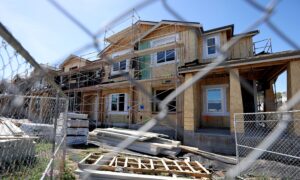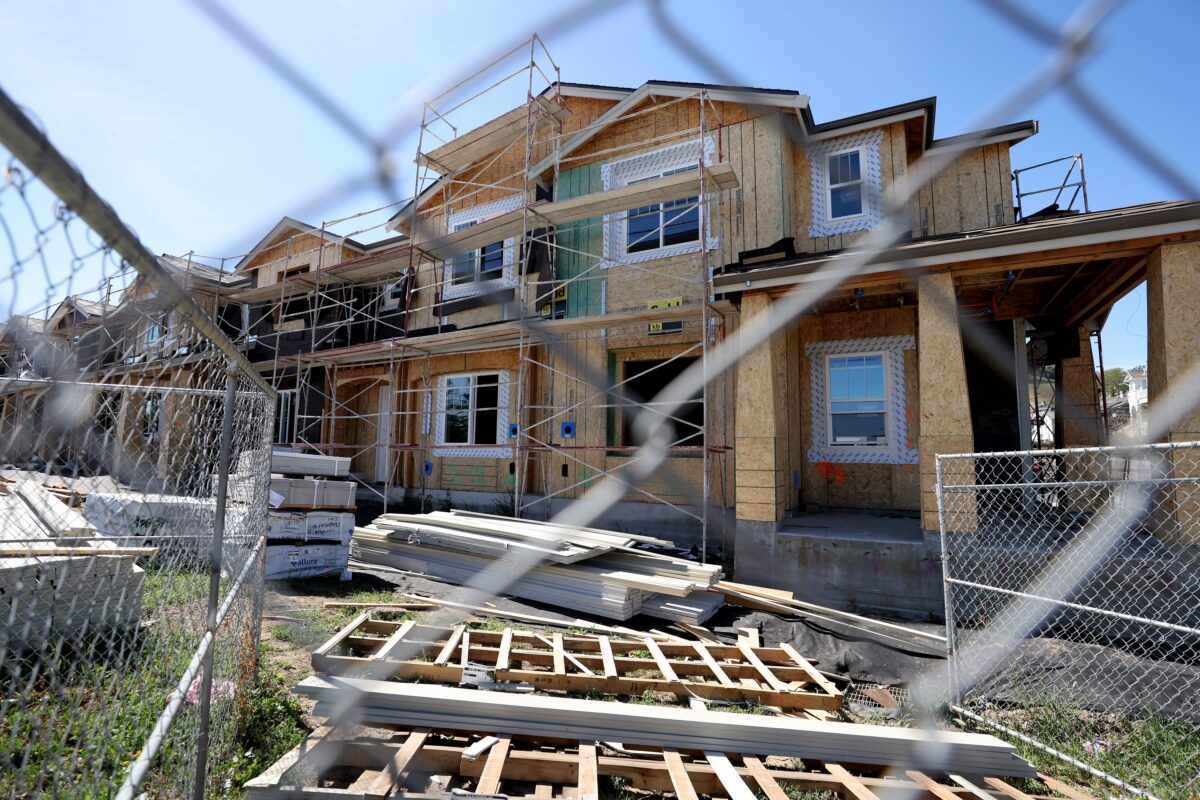
Financial officers from 27 states issued a letter to President Joe Biden protesting a new policy from the Federal Housing Finance Agency (FHFA) that increases mortgage fees for some higher-credit borrowers while lowering them for more risky borrowers.
This policy, which critics say will penalize people with good credit and encourage risky borrowing, went into effect on May 1. It may also penalize some borrowers who put down a larger down payment when buying a home.
According to a letter to the FHFA and the Biden White House, signed by 34 officials from 27 states, the new FHFA policy “will take money away from the people who played by the rules and did things right—including millions of hardworking, middle-class Americans who built a good credit score and saved enough to make a strong down payment.
“Incredibly, those who make down payments of 20 percent or more on their homes will pay the highest fees—one of the most backward incentives imaginable,” the letter states. “For decades, Americans have been told that they will be rewarded for saving their money and building a good credit score. This policy turns that time-tested principle upside down.”
By encouraging loans to those who may struggle to afford them, this policy also has echoes of the 2008 mortgage crisis and could put America’s mortgage-lending institutions at risk, West Virginia state treasurer Riley Moore told The Epoch Times.
“Banks are going to have mortgages on their balance sheets of people that could have greater risk of default, [and] people who do have good credit scores and are now being punished are going to be less likely to buy homes,” Moore said. “Our institutions are becoming more corrupted and co-opted by the political elite that are determined to use them for their own political purposes.”
When assessing creditworthiness for mortgages, lenders look at credit scores, debt-to-income ratios, and down payments as a reliable predictor of a borrower’s likelihood of default. One of the saddest consequences of the 2008 mortgage crisis was the more than six million Americans who lost their homes when they became unable to keep up with their mortgage payments.
In offering breaks for lower credit scores and down payments, the Biden administration appears to be in lockstep with several of America’s largest banks. Bank of America, for example, announced in September 2022 that it would offer “zero-down” mortgages to minority borrowers, requiring no down payment, and consider their record of paying rent and phone bills rather than their credit scores.
FHFA Says Risky Borrowers Still Pay More
The FHFA, however, denies that they are incentivizing risky borrowing.
“Higher-credit-score borrowers are not being charged more so that lower-credit-score borrowers can pay less,” the FHFA states. “The updated fees, as was true of the prior fees, generally increase as credit scores decrease for any given level of down payment.”
The FHFA was established in 2008, in the wake of the mortgage crisis, and was put in charge of overseeing the Federal National Mortgage Association (“Fannie Mae”), the Federal Home Loan Mortgage Corporation (“Freddie Mac”), and the Federal Home Loan Bank System, which includes the 11 Federal Home Loan banks, and the Office of Finance. Fannie Mae and Freddie Mac were established to purchase home loans from banks, allowing banks to issue new loans and thus supporting and expanding the U.S. mortgage finance system.
Without these institutions, banks would be limited in issuing long-term fixed-rate mortgages from short-term, variable-rate deposits. Accordingly, the standards and criteria set by these organizations become the market standards for home loans in America. They charge upfront fees for their services, including providing repayment guarantees, and these fees are generally priced for risk, and therefore are higher the more risky a borrower is deemed to be.
The FHFA stated that it conducted a review in 2021 of its fee structure in order to “maintain support for purchase borrowers limited by income or wealth, ensure a level playing field for large and small lenders, foster capital accumulation at the enterprises, and achieve commercially viable returns on capital over time.” The results of this review were the elimination of upfront fees for first-time homebuyers with lower incomes, as well as higher fees for second home loans, high balance loans, and cash-out refinances, the FHFA stated.
Overall, the revised fee structure reduces the gap between the fees charged to good-credit borrowers and fees charged to lower-credit borrowers. Under the previous fee structure, for example, borrowers with credit scores in the 740–759 range would pay $1,750 in upfront fees, while borrowers with scores in the 640–659 range would pay $10,500. Under the new fee structure, those same borrowers will pay $3,062 and $7,875, respectively.
“We recognize that there’s a gap in access to credit and that low credit scores are a significant barrier to buying a home,” state financial officers wrote, but they argue that federal affordable housing assistance programs already exist to help borrowers.
“The right way to solve that problem is not to use the power of the federal government to penalize hardworking, middle-class American families by confiscating their money and using it as a handout,” they state. “The right way is to implement policies which will reduce inflation, cut energy costs, and bring lower interest rates.”



















































